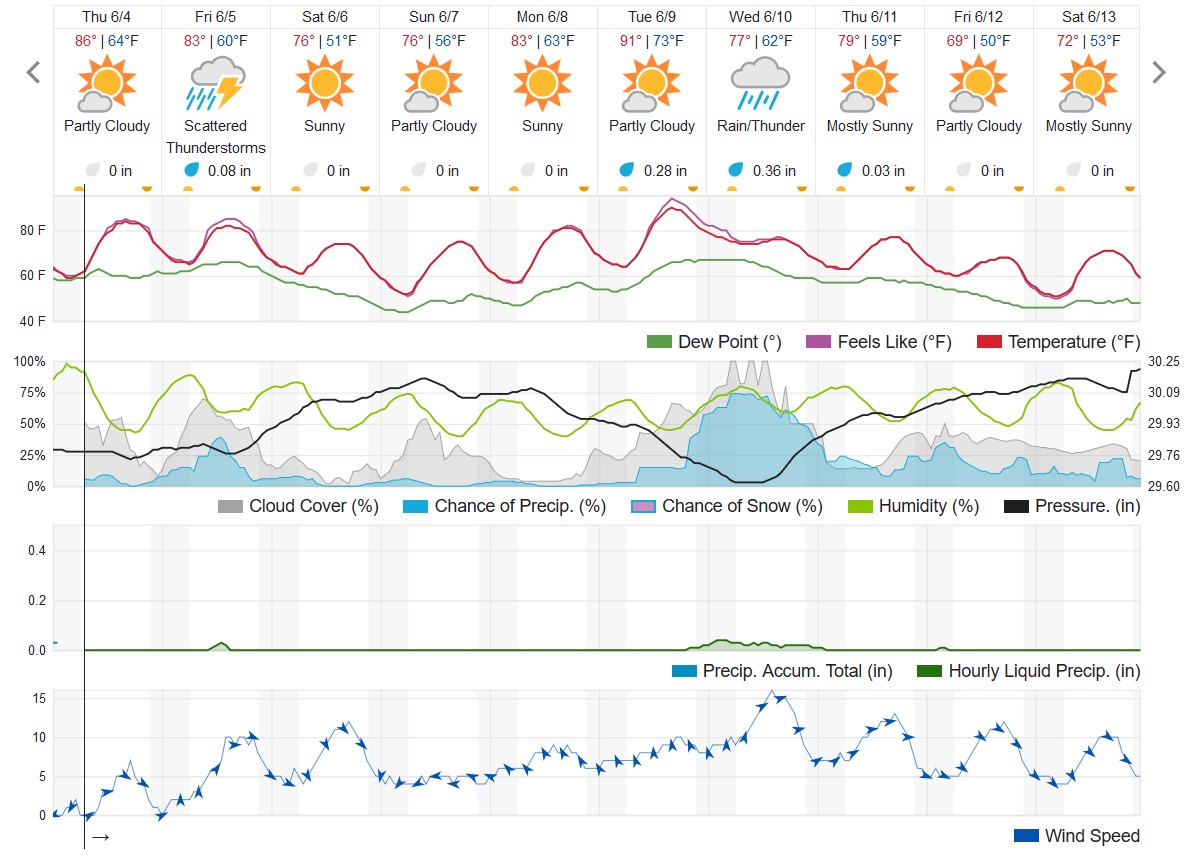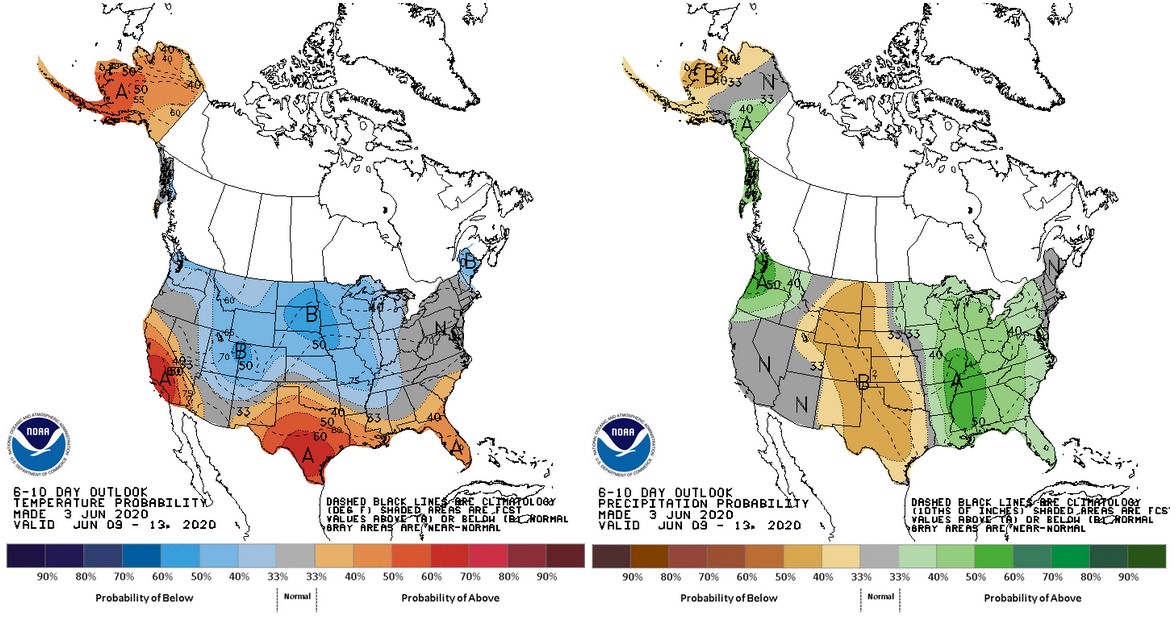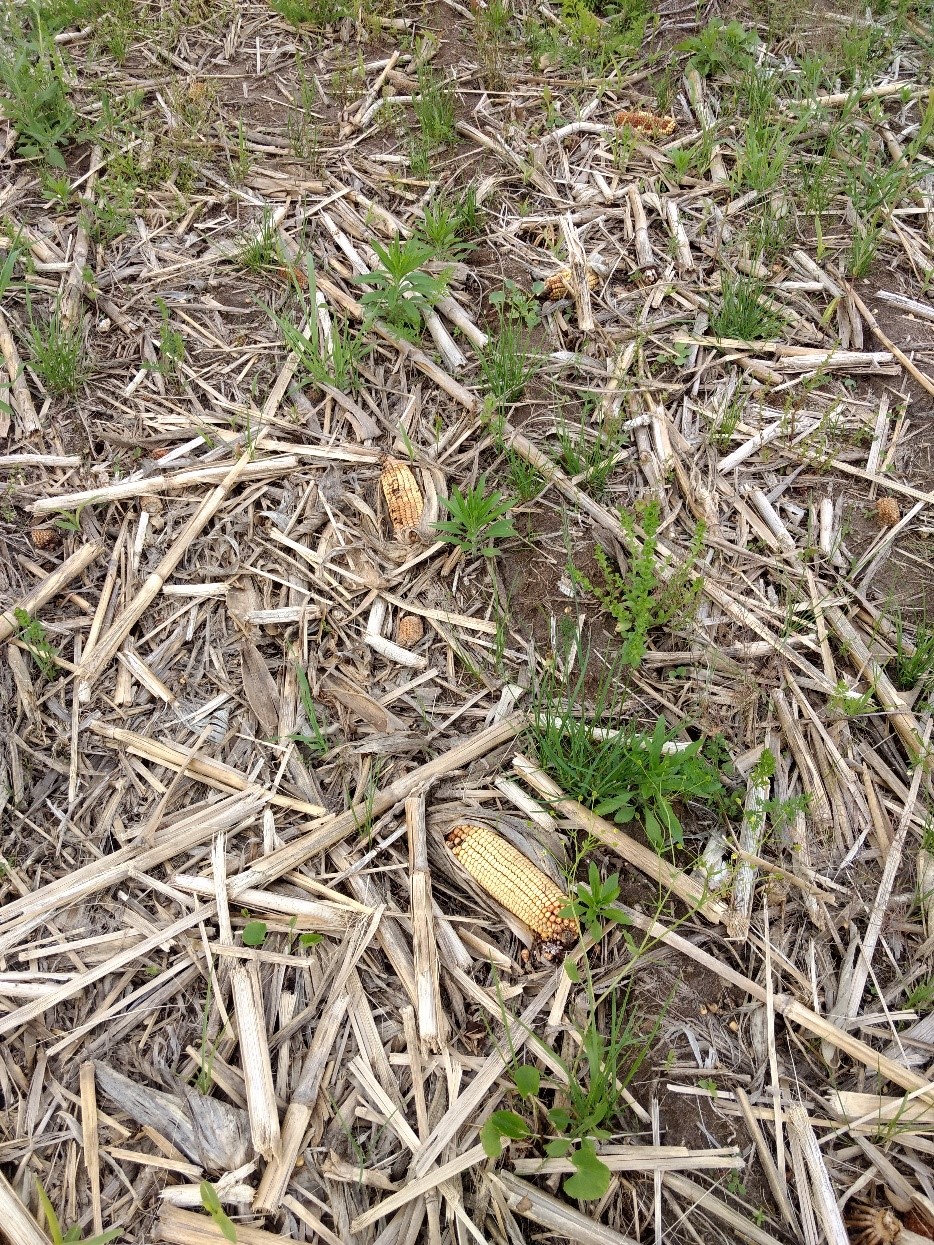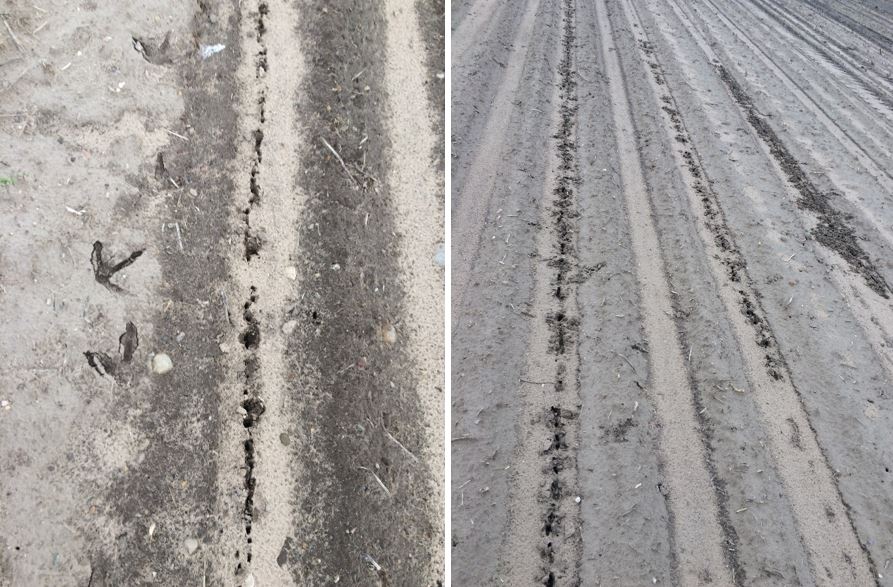Southwest Michigan field crop update – June 4, 2020
Warm and dry conditions this past week made way for good progress with field work. Weather will continue to be conducive through early next week.

Weather
Warm and dry conditions prevailed in the region since last Wednesday, May 27, and we are now less than 100 growing degree days (GDD) base 50 degrees Fahrenheit behind normal. We are seeing near-ideal conditions for crop development and first cutting hay harvest.
There is a slight chance of precipitation with an approaching low-pressure system on Friday, June 5, but a high pressure system behind that will bring cool and dry weather this weekend. Temperatures will climb again early next week but both rain (about 1 inch) and a return to cooler-than-normal temperatures is predicted for mid- to late week next week, as the remnants of Tropical Storm Cristobal move northward. Cooler temperatures will stay with us through mid-June.



Irrigation
With dry conditions likely to continue through early next week, those with irrigation capability have begun supplementing crop water needs. Lyndon Kelley, a Michigan State University Extension and Purdue University Extension irrigation educator, has provided two helpful resources: "Irrigation season: Start with inspections and repairs” and the Michiana Irrigation Association May 2020 Newsletter. Here is a quick overview of what you’ll find in the Michigan Irrigation Association newsletter:
- Indiana Regulatory Programs Reminder for Irrigators—Mark Basch, DNR
- The Necessity of Data in Modeling—Todd Feenstra, Tritium
- Irrigation Management to Reduce Cost and Foliar Disease—Marty Chilvers, MSU, and Darcy Telenko, Purdue
- Improving Irrigation Management to Increase Return on Investment—Younsuk Dong, MSU
- Potato Update—Michigan Potato Commission
- Is Your Center Pivot Chemigation Ready? —Lyndon Kelley, Extension irrigation educator
Corn

Once again, we have corn in virtually every growth stage, from V5 to still in the bag. Some of the best looking corn fields across the region were planted in April on light soils. We are seeing challenges with corn planted in early May on heavier soils in many areas across the region. Seed emergence was delayed due to cold conditions and then was inundated by heavy rainfall. Many of these fields had poor germination and early growth, and some are being replanted now that we have some drier field conditions.
The most compelling challenges to corn are likely to come from movement of early-applied nitrogen out of the root zone. Soil temperatures were warm enough to have losses from denitrification as well as leaching losses on lighter soils. Intense thunderstorm-driven rainfall also may have contributed to the movement of herbicides in lower areas of fields.
Important update: MSU Extension soil fertility specialist Kurt Steinke will be the featured speaker on next week’s Field Crops Virtual Breakfast, June 11, 2020 at 7 a.m.. Steinke will discuss ways to assess the risk of nitrogen losses on corn and look at ways to address the situation. Note the change in schedule due spring flooding concerns in the state.
Warm temperatures and wet soils have provided less opportunity to apply postemergence herbicides in a timely manner. Watch weed heights carefully and make sure your herbicide choice is up to the task of controlling what you are seeing for weeds in the field.
We should be on the lookout for armyworm and black cutworm in corn fields, especially in areas that were burned down with lots of green material. Armyworm tend to feed along the leaf margins, leading to leaves with ragged edges. Early instar black cutworm will leave small holes in leaves until they become large enough to accomplish the more typical seedling clipping injury they are known for. It takes about 300 GDDs from egglaying to clipping, so depending upon when the moths migrated to your fields, damage could be seen fairly soon. Rescue treatments with a foliar insecticide should be considered when damage reaches about 5% of the plants.
The most prevalent damage we have seen this spring is coming from sandhill cranes. Cranes are numerous this spring and can be seen working fields regularly. The birds stab their long bills into the soil and remove the seedling, eating the kernel attached to the root of the seedling. Corn is vulnerable to cranes up until the plants are about 1 foot in height. We have seen some cranes digging up seed down the row even before the plants have emerged.

Soybeans
Early planted soybeans are growing very well with the warmer temperatures. Soybeans that were planted and then experienced pounding rainfall have faced some crusting conditions, depending upon location and soil texture. Monitor later planted beans for crust development and be prepared to rotary hoe to help emergence if the situation warrants it. Remember, avoid rotary hoeing beans in the crook stage to reduce damage to the beans.
Alfalfa
Most folks have been able to get highly productive alfalfa fields cut while we are struggling to get mixed hay fields cut in some places. Alfalfa weevil is out there in high numbers in some fields—high enough to warrant looking at regrowth in harvested fields. MSU Extension field crops entomologist Christina DiFonzo suggests checking for weevil larvae on the regrowth, which can delay or prevent green up. The threshold after cutting is six to eight larvae per square foot of regrowth. Several MSU Extension articles address management considerations for alfalfa weevil and other pests.
Wheat
Fields in the southwest are now at flowering (also known as anthesis, Feeke’s 10.5.1). MSU Extension field crop pathologist Marty Chilvers says fungicides for Fusarium head blight (also known as head scab) need to be applied during flowering for maximum efficacy. Currently, the Fusarium head blight risk is low for moderately susceptible or moderately resistant varieties according to the Fusarium Risk Tool, but the risk will increase as cooler temperatures and wet weather arrive later next week.
Two online resources that will be particularly helpful are Optimizing Fungicide Use for Fusarium Head Blight (Scab) and Associated Mycotoxins and the Fungicide Efficacy for Control of Wheat Diseases bulletin.




 Print
Print Email
Email